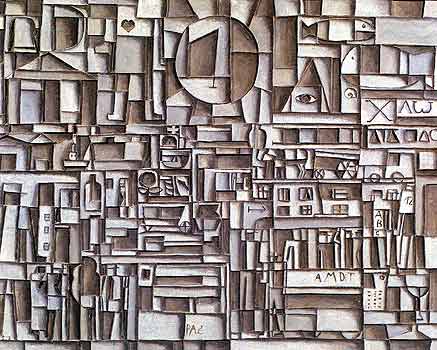Museum of Latin American Art ,
Sep 24, 2000 - Jan 14, 2001
Long Beach, CA, USA
Gurvich: A narrative walk-through of the exhibit
by Cynthia MacMullin
"Jose Gurvich: A Song to Life" introduces United States viewers to the Uruguayan painters' oeuvre, a multifacted body of art that borrows freely from well known styles as it touches on themes close to the artist's hearts." David Pagel, art review, Los Angeles Times, October 2, 2000. A Song to Life is a traveling exhibition first presented in Sao Paulo, Brazil, Mexico City, Mexico, and is currently on view in Long Beach,California at the Museum of Latin American Art. The exhibition of over 120 paintings and mixed media works is drawn from the Gurvich family collection, organized by Martin Gurvich, and curated by Uruguayan scholar Alicia Haber. It is the first United States solo museum exhibition of this important Uruguayan twenty eight years after his death in New York City in 1974. Organized in chronological order, the exhibition is presented in the main gallery of the museum in four thematic movements created throughout the artists life: Constructivism; Couples and the Cosmos; Israel and Jewish Identity; and New York Urbanism. José Gurvich (1927-1974) was born in rural Lithuania in 1927, and his family immigrated to Uruguay in 1932, establishing themselves in a Jewish neighborhood in the capital city of Montevideo. In 1942, Gurvich began studying painting at the National Art School under the direction of the Uruguayan painter José Cúneo. In 1944, he encountered master painter Joaquín Torres-García (1874-1949) and joined the Taller Torres-García (Torres-García Workshop) in 1945. During the 1950s and 1960s, Gurvich's search led him to travel Europe and to live between Uruguay and an Israeli kibbutz (collective farm or settlement). The 1960s were his most productive period and in 1970 he moved to New York City due to political unrest in both Israel and Uruguay.His career ended unexpectedly due to a heart attack in 1974. Drawing upon these influences, Gurvich devoted himself to creating a personal aesthetic language from the distinctive origins of his beliefs and his experiences. Gurvich reveals a world that assimilates his admiration for the art of Torres-Garcia, Bosch, Chagall, Brueghel, Miró, and Klee, among others, into paintings of luminous color palettes, complex compositions, and philosophical and mythological narratives. Gurvich mined the fields of various art historical traditions, and investigated his ethnic and cultural heritage to create an evolved and re-invented language of art. His art is a testimony to his versatile and imaginative spirit, and significantly contributes to the artistic heritage of Uruguayan, Latin American, and International art.
|













